
Tishreen protesters running away from clouds of teargas (top), Sadrist protesters having a swim in the Iraqi Republican Palace’s pool. Photos: AFP; Graphic: Rudaw
As heavy dust storms engulfed the Iraqi capital, and in the scorching heat, thousands of angry Shiites devoted to charismatic cleric Muqtada al-Sadr were gearing up for mass Friday prayers inside Baghdad’s Green Zone to challenge the status quo.
But Khalil, a veteran of the bloody Tishreen movement, was disillusioned with protest and decided to stay away this time. He thought that unlike the 2019 popular protests he had been a part of, the current Sadrist ones were more about power and political influence rather than out of love for the homeland.
He could not help but think about his friend, Mohammad Ali al-Mukhtar, whose life was cut short at the age of 20 when a teargas canister pierced through his skull, killing him instantly.
Mukhtar chose Iraq
Mukhtar wanted to spend that Tuesday evening having a candlelit dinner with the woman he loved, as they tell each other about their day and envision the rest of their lives together. He felt conflicted as it did not feel right to abandon the movement he and his friends had passionately fought for over the last couple of months, particularly on one of its most decisive days: the million-man protests.
After a lot of deliberation and contemplation, Mukhtar, whose name translates to “the chosen” in Arabic, chose the latter.
It was this fateful choice that led him to meet his end. As the sound of live bullets echoed deafeningly in Baghdad’s Tahrir Square on February 25, 2020, a teargas canister carelessly fired by security forces punctured Mukhtar’s eye.
“We called him Hamamat Alsalam [The peace dove] because he was always smiling and sharing the peace all over the university or wherever he was,” said Khalil, a close friend of Mukhtar, as he smiled away the heartache that was visible through his eyes. “I met him at a new year’s party in 2016 or 2017… He told me to take a picture of him because he was going to be famous.”
Mukhtar is survived by his grieving family, and his bereaved girlfriend who has still not been able to come to terms with the loss of her loved one, even two years later. His father has reserved a spot to be buried next to his son whenever his time may come.
“I wanted you to dig my grave, not for me to dig yours,” Khalil recalled Mukhtar’s father crying during the burial of his body.
Mukhtar’s role in the protests was to wave the Iraqi flag high. A task he proudly followed through with until he drew his last breath.
“We did not get the point of his death. We did not get justice for his death. There is no justice, this is Iraq. We lose our friends and they become numbers in the hospitals. We are only numbers in Iraq,” lamented Khalil.
Over 792 people were killed and over 25 thousand others were injured “many suffering a permanent handicap,” during the Tishreen protests, according to a September 2020 report from the UK-Based Iraqi Warcrimes Documentation Center.
Over 2,860 activists were detained during the protests, with the whereabouts of at least 70 still unknown, the report added.
The contrast
Thousands of Iraqi people took to the streets in nationwide demonstrations on October 1, 2019, - later to be titled the Tishreen movement - protesting the country’s poor economic conditions, unemployment, foreign interference, and overall corruption.
An immediate standout characteristic of the Tishreen movement was that it was started and led by the youth. Thousands of future doctors, engineers, and teachers who left the classrooms, deciding to take matters into their own hands to try and save their homeland. They were galvanized by nothing other than their love for Iraq and their loss of faith in the country’s political system.
When the Sadrist Movement protests began in late July upon the call of Sadr, efforts were made to present the demonstration as one of the public, rather than one guided by the cleric’s ambitions for a national majority government in Iraq.
Despite having a large number of youth among them, the Sadrist protesters were mainly led by tribal leaders and political groups. Talking to the youngsters inside the Green Zone, you were bound to hear a regurgitated speech about changing the government “from the roots” and dissolving the parliament, while singing praises about Sadr.
Sadrist supporters stormed the Iraqi parliament building on July 27, staging a sit-in inside the Green Zone, once considered the “safest place” in Iraq, with little to no resistance by the security forces.
The general atmosphere inside the Sadrist-occupied Green Zone after a month of sit-in would hardly imply a sense of threat or danger. Tents were set, food was distributed, games were played, hookah was smoked, and no official Iraqi security actors were to be seen. Even the security inspections were conducted by young boys who were visibly under the age of 18.
The Tishreen protesters were met with live bullets, teargas, battery, and other forms of brutality from Iraqi security actors trying to control the situation and disperse the demonstrations. At least 110 were already killed within the first seven days of the protests.
While Sadrists proudly infiltrated the country’s highest legislative authority, the closest thing the Tishreen protesters had to a haven was the Turkish Restaurant in Baghdad. The 14-floor building opposite the Green Zone became an icon of the movement, acting as a watchtower for the protesters to alert their companions in case of another customary offensive by the anti-riot police.
The building was affectionately named “Mount Uhud” by the protesters, which is the name of the slope in Saudi Arabia where Prophet Muhammed sought refuge following the Muslims’ defeat during the Battle of Uhud.
Khalil stressed that the Sadrist protesters had every right to hold protests, as it is evident through the result of the elections that they make up the majority of the country.
“The elections say the people want Sadr,” he said.
Khalil’s support for the Sadrists’ right to protest were echoed by Hussain, who volunteered as a medic during the Tishreen protests and preferred his last name to be omitted due to the sensitivity of the subject.
“Tishreen itself is nothing but a name for a set of claims and demands that the people want,” Hussain told Rudaw English through Whatsapp early September, adding that the way the “media of the government is making somehow every movement to be demonized, if that is the right word to say, is a wrong concept. It is just a wrong path to follow.”
“If we want to achieve the vision of democracy… we should have a better understanding for all the parts in Iraq, and the division of the visions of the people,” he added.
The outcomes
“This is Iraq. They are representing Iraq. How can we say anything? They are representing Iraq and they vote in the elections to choose him [Sadr],” decried Khalil, disappointed in the outcome of Tishreen.
Although the Sadrist Movement was the kingmaker of the 2021 early elections with 73 seats, the parliamentary vote saw a record low turnout which further highlighted the Iraqi people’s lack of trust in their country’s democratic system.
Similar thoughts were echoed by Hussain saying “the country is not any better now,” but stressing that he still believes in the demands and visions of the Iraqi people.
Mistaffa disagreed with the notion that the Tishreen movement did not produce any achievements.
“The greatest achievement…. is that they created a “nightmare” for the corrupt officials and politicians knowing that the young people do not accept ruining and looting the country anymore. The corrupt people now know that their days are counted, and their end is getting closer with the sunset of each day,” said the lecturer.
Iraq’s political climate now seems more uncertain than ever, with the government formation process halted due to disagreements between the blocs over the mechanism of its formation.
The Coordination Framework, a pro-Iran Shiite parliamentary faction, opposed Sadr’s attempts at forming a national majority government following the October elections and insisted on forming a government based on political consensus.
The hindrance posed by the Coordination Framework led Sadr to withdraw all his MPs from the Iraqi parliament on June 12, saying that he was giving a chance to his rivals to form a government without him.
The political unpredictability in Iraq reached new heights on August 29 following Sadr’s announcement of his “definitive retirement” from the political landscape.
Sadr’s retirement incited deadly clashes between Saraya al-Salam and loyalist Iran-backed militias in the Green Zone, which killed at least 30 people and injured 500 others in the span of 24 hours.
“The Tishreen protests were able to remove the government of Adil Abdul-Mahdi and replace it with a caretaker government whose job was to hold an early election, whereas the Sadr protests resulted in a short-lived one-day Shiite civil war in which dozens of protesters were killed,” said Mistaffa, contrasting the outcomes.
In reaction to the massive Tishreen demonstrations, Adil Abdul-Mahdi, Iraq’s then prime minister, announced that he was stepping down from his position on November 29, 2019, and a new electoral law was approved by the parliament a month later.
Sadr apologized to the Iraqi people the day after for the altercations that followed his retirement announcement, criticizing the “revolution” of the Sadrist Movement, and demanding his followers to cease the violence and prevent further bloodshed.
"A revolution marred by violence and murder is not a revolution," said Sadr in a televised speech.
After quieting down for nearly a month, Sadrist supporters flocked to the streets of Baghdad on Wednesday in an attempt to block the Iraqi parliament from holding its first session in three months, but this time they were met with a more consolidated security presence.
Nonetheless, three rockets landed in the Green Zone hours following the parliamentary session, injuring at least seven.
The reinforcement of the Green Zone continues, as Tishreen activists are expected to hold fresh demonstrations in multiple locations across Baghdad on Saturday, marking the third anniversary of the movement’s birth.
“If Tishreen is back, I won’t participate in it,” said Khalil, citing his sadness over the lack of justice for his friend’s death and his frustration with the aftermath of the 2019 protests as his reasoning.


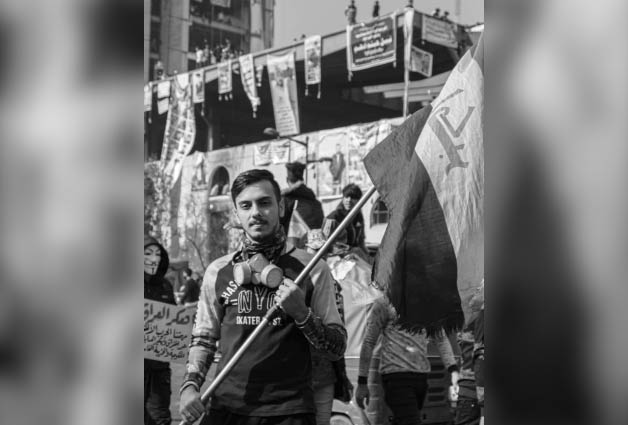
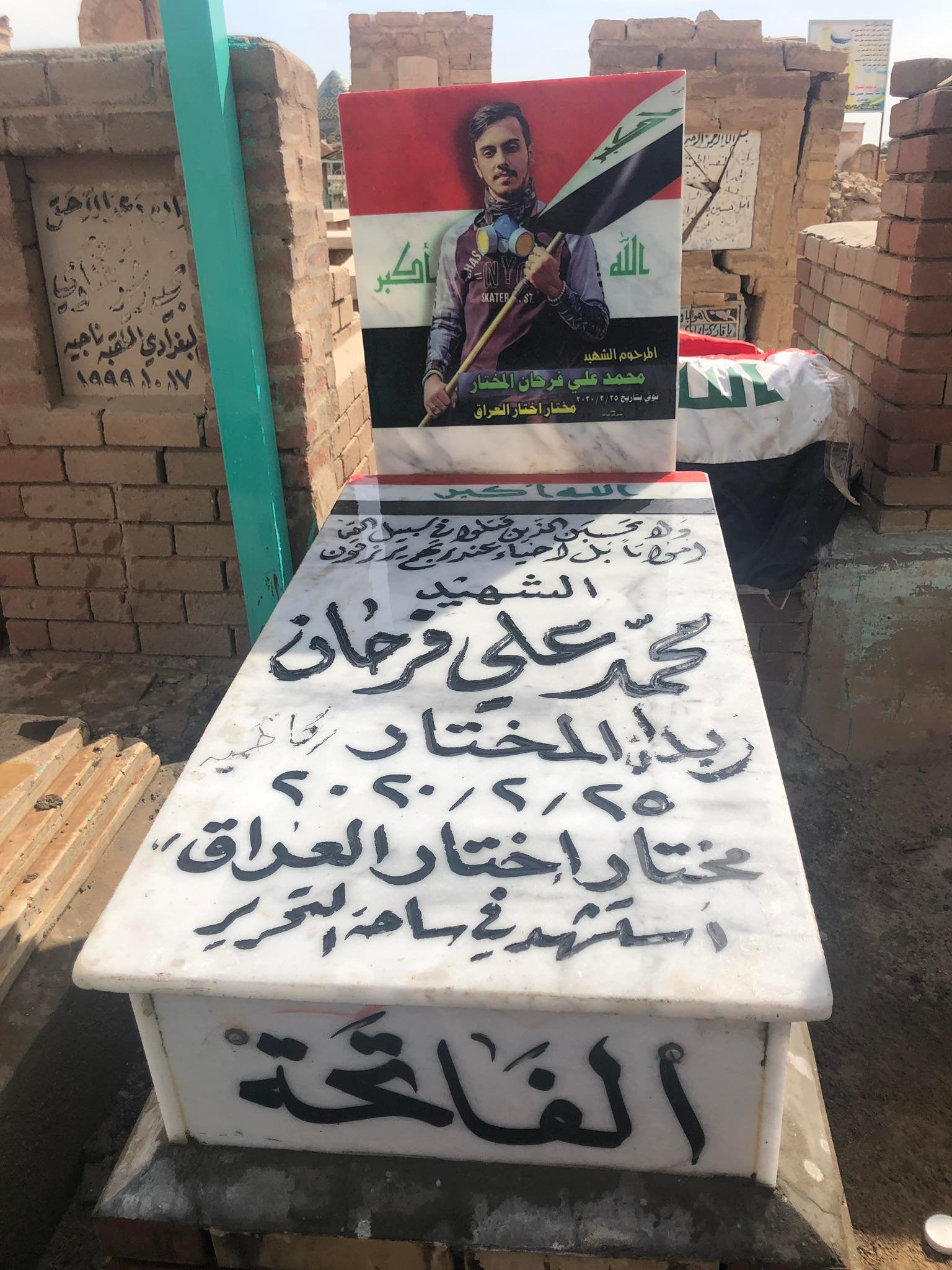
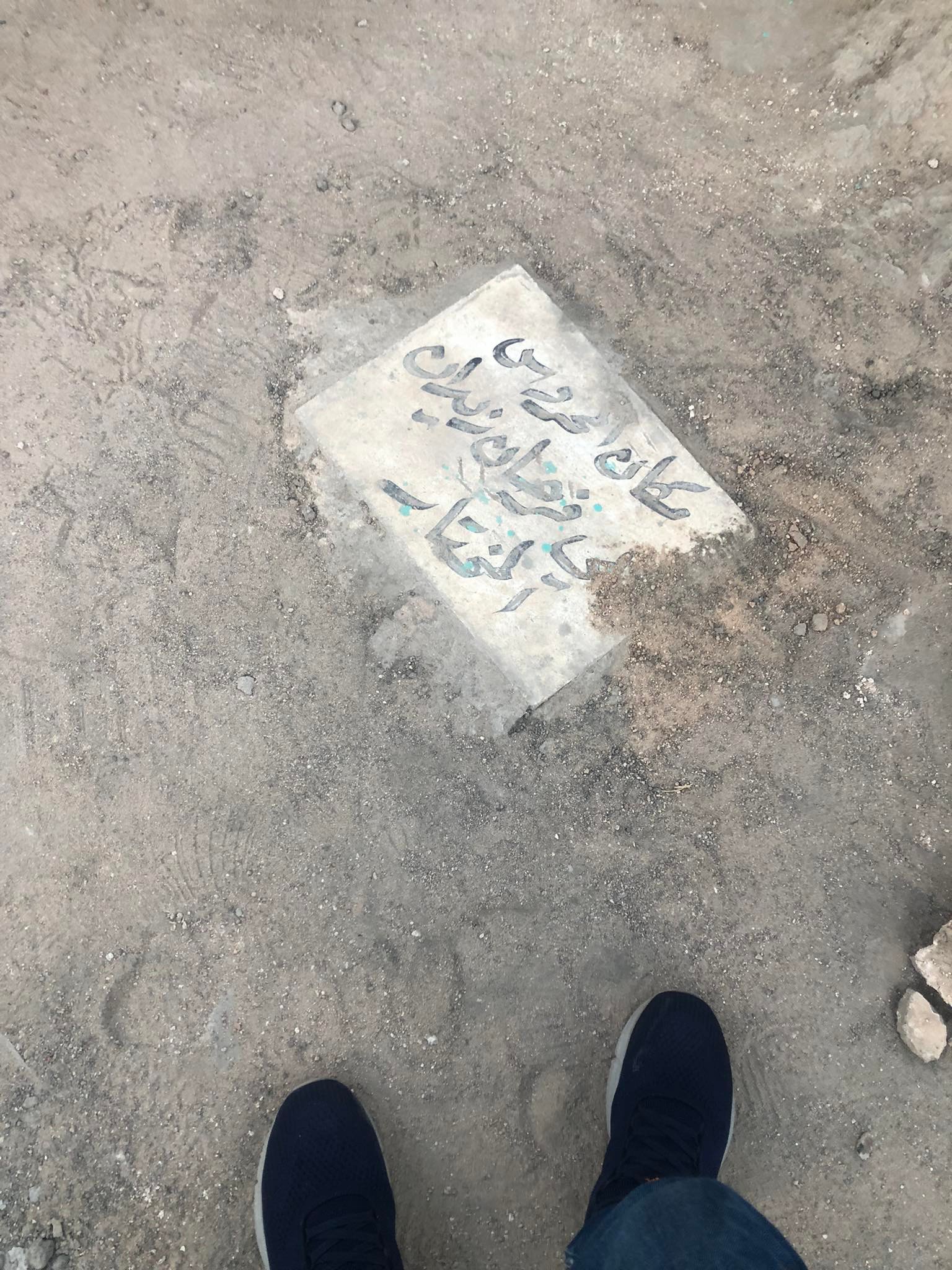
![An artwork shows a group of youth rescuing their friends from the clouds of tear gas during the Tishreen protests, using an auto rickshaw [Tuktuk] which became a symbol of the movement. Credit: Zuqaq 13](https://www.rudaw.net/Library/Images/Uploaded%20Images/2022/09/30/309276193_545870283972878_3147949213859656809_n.jpg)
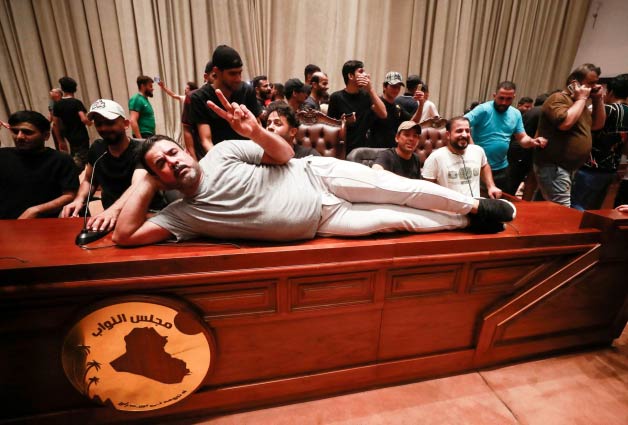
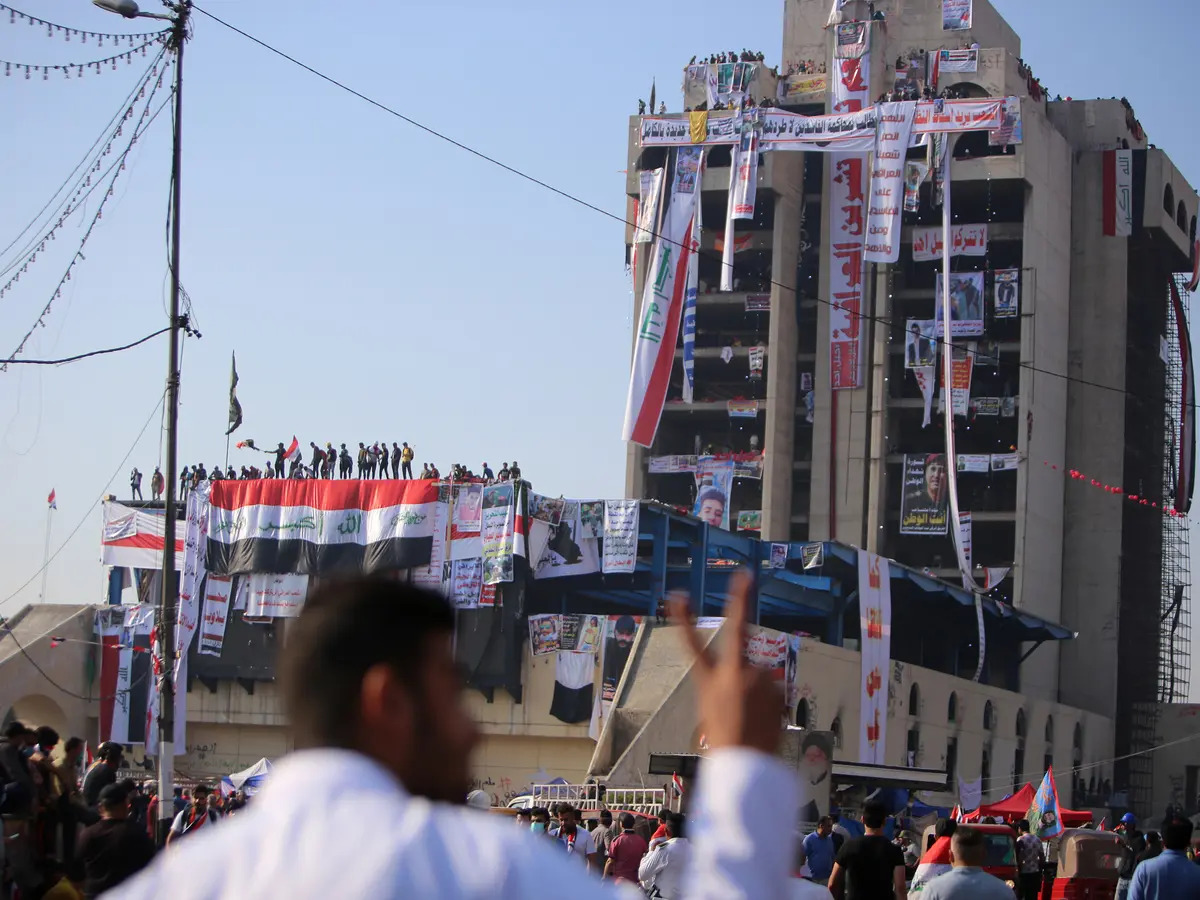





Comments
Rudaw moderates all comments submitted on our website. We welcome comments which are relevant to the article and encourage further discussion about the issues that matter to you. We also welcome constructive criticism about Rudaw.
To be approved for publication, however, your comments must meet our community guidelines.
We will not tolerate the following: profanity, threats, personal attacks, vulgarity, abuse (such as sexism, racism, homophobia or xenophobia), or commercial or personal promotion.
Comments that do not meet our guidelines will be rejected. Comments are not edited – they are either approved or rejected.
Post a comment